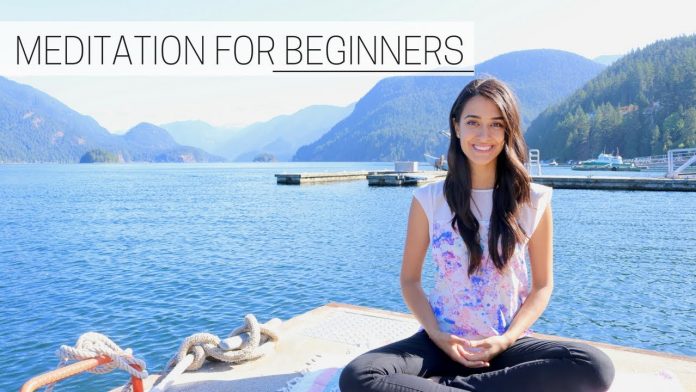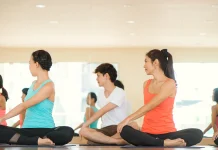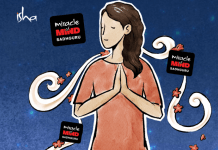Meditation offers many benefits to its practitioners, from a giving a sense of calm to a sense of focus. The more we practice meditation, the more benefits our mind experiences. However, meditation may not be easy for some people, as it takes intent and practice to reach a certain level at which the benefits are visible. It’s better to ease into the process and take it slowly step by step.
Here are 7 types of meditation for beginners:
Loving-Kindness Meditation

The goal of Loving-Kindness meditation or also known as Metta meditation is to cultivate loving feelings from everyone around you and spread the positivity. This does not include strangers, people you are not well acquainted with and people you dislike. You will focus on loving thoughts, thoughts of kindness, and making peace with everything and everyone around you. It’s a great way to practice self-compassion for yourself and others, as well as boost joy and love for self and others. All in all, it is a way to practice forgiveness and healing. Research has even mentioned that it can aid with physical healing and improves mental well-being
How to practice:
First, find a comfortable position. With eyes close, bring awareness to the chest area, to the heart center. While you breathe in, imagine that you are breathing in warmth, compassion and unconditional love for yourself. As you breathe out, imagine that you are directing all that to the people you know. Of course, the first people you would think about will be your close friends or relatives, but you will eventually spread out positivity to neutral acquaintances and then to those you don’t particularly like right now.
Otherwise, you can use the power of mantras. Again, you must find a comfortable position. Choose a compassionate mantra; for instance, May I be happy and free, then close your eyes and say the mantra out loud. Direct it to them using the power of visualization by visualizing them and change the pronoun to reflect them, such as May they be happy and free. Then share the compassion for the world by saying, May all beings be happy and free. These mantras may be as long, short or as with many lines as you want.

There are many ways to practice meditation from eating, walking, observing the world and the more popular method of sitting in stillness. Originating with Buddhist traditions, mindfulness meditation is one such meditation that can be life changing as it is an ongoing life practice that helps you to accept all that arises without judgement. If there is any burdening you, meditation helps you confront your inner demons and release it right away. Thinking about the ‘now’ focuses your thoughts on what is right in front of you rather than stress on what’s to come as well as the past.
At the same time, you will be surrendering to your inner confrontations and placing more attention on that which helps you grow and evolve in a positive direction. This leads to many things including reduced stress levels, positive mood, improved health and well-being, less fixation on negative emotions, improved satisfaction in relationships and reduced impulsive, emotional reactions.
How to Practice:
There are many ways to practice mindfulness. One way is to take some moments throughout your day to notice how you feel and what’s going on around you. The S.T.O.P. technique is the perfect meditation technique that can help you deal with stress. You will be able to pause, take in what’s happening, and then act with more awareness and wisdom.
- Stop what you’re doing.
- Take a breath and pause.
- Observe what is happening in your mind, body, and external environment. Notice any default behaviors such as anger, fear, etc.
- Proceed mindfully
Mantra Meditation

Mantra meditation or ‘Vedic meditation’ is where you will focus your attention on a ‘mantra’, namely a word, phrase, or syllable which can be used as a vehicle or instrument of the mind and can be used in different ways. As it is silently repeated during meditation, it keeps the mind focused and serving as a vehicle to reach higher states of consciousness. Some mantras are meant to have meaning and others are used for their sounds or vibrations and purposefully have no meaning. This is the perfect activity when everything in your life seem out of balance and overwhelming, as it gives your brain something else to focus on. Therefore, it reduces stress, improves mental and physical health as well as helps to gain clarity into your true desires.
How to practice:
Among all the mantra that you see online or discuss with a yoga teacher, choose one that resonates with you. In a bad day, we recommend choosing a mantra that contains self-affirmation such as I am worthy. In a good day, you can choose either, even a simple chant such as the ever-popular Om. Repeat that mantra over and over again for a few minutes. It’s perfectly normal to get distracted within a few tries, so don’t get stressed out over it. You can just simply draw your focus back once more to the mantra. We recommend practicing this for 20 minutes every morning and evening.

Breathing meditation or “Nadi Shodhana”, is the practice of breathing as a method of meditations. When your day becomes overwhelming, take some time off to practice breathing meditation and it is guaranteed that you will feel calmer afterwards. In general, it’s helpful to start with a breathing practice before going into your regular meditation. This meditation practice also makes you focus back into the present moment, helping you make more conscious decision.
Benefits include reducing stress, clears and centers the mind, revitalizes the body and improves physical well-being. It also helps focusing on the present rather than the past or the future, which you cannot control. You don’t have control over changing the past or future, but you do have control over the present. What you do today affects tomorrow.
How to Practice:
This is one of the easiest method of meditation, as it only requires for you to breathe while keeping your focus. For better breathing position, sit with your spine upright. Start by closing your lips and inhaling through your nose for four seconds until your lungs are full. Hold the air in your lungs for seven seconds, then exhale for eight seconds. In the meantime, your mind must focus on your breaths-if it strays elsewhere, gently take it back to focus on your breath.

With all the methods of meditation you can try in this list, you can also choose to just simple turn on your speakers. Sound meditation is not as complicated as it sounds and does not need a step-by-step guide to perfectly master it. But done correctly, sound meditation is just as effective as other forms of meditation and helps reduce tension, anger, fatigue, anxiety, and depression while increasing a sense of spiritual well-being.
How to Practice:
You can either listen to crystal singing bowls, combined with ambient sounds, chimes, nature sounds, and vocals. However, you can do a sound meditation all on your own by choosing one from a Spotify meditation playlist. Choose music that is soothing, relaxing, and without vocals, which can be distracting. Otherwise, you can choose music that feels uplifting to create a more harmonious state of mind.

Meditation can be done a different number of ways, even walking can be done as a type of meditation. While going on our regular walk, sometimes our emotions run astray, where you think of things that cause judgment, anger, stress and fear. Release those emotions by practicing walking meditation. Movement can help keep our minds present and meditative rather than stuck on worries. Walking is the best way to ground yourself if you are feeling heavy about something
How to practice:
Think of walking meditation as using light physical exercise to shake off nasty thoughts. All you need to do while walking is to focus on all five senses and your surroundings. Everything should be intensely focused such as the sensation of your foot slowly meet the ground, hearing the bristle of leaves and becoming aware of the speed of your breath. You can even listen to cheerful music that makes you dance to uplift your mood.
Trataka

On the other hand, there is also Trataka, which is a type of meditation in which you keep your eyes open and focused on a point or object. This can be a variety of things, but the most common one is the flame of a lit candle or items such as crystals. Doing the Trataka regularly can bring energy to the third-eye chakra and can increase concentration.
How to practice:
Find a comfortable spot, then sit. Focus your gaze on a single object such as a candle, tree, or crystal. With relaxed eyes, try your best not to blink. Keep your eyes on the object and focus, but once you feel uncomfortable then close your eyes. Keep the image of the object in your mind’s eye, then open your eyes and start again.
Which meditation are you planning to try? Tell us in the comments section below!






